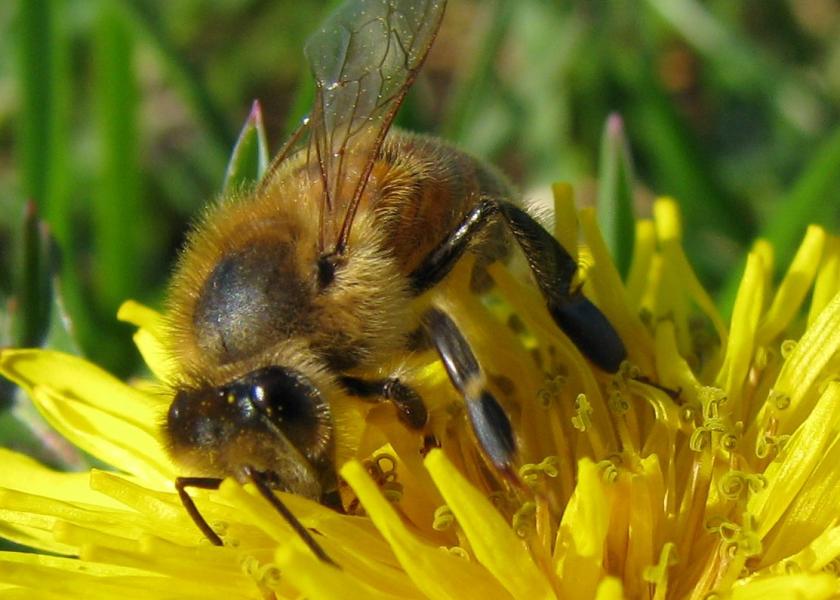The Little Things Count

Bees and microbes play a major role in the success of agriculture producers.
It’s the little things — like bees and microbes — that help feed the world. According to Becky Timmons, global director of applications research and quality assurance at Alltech, these two naturally occurring organisms will play a crucial role in feeding the world’s growing population.
In order to feed 9 billion people by 2050 agricultural yields need to increase 75 to 100%, Timmons shared during the closing session of the 30th Alltech Symposium in Lexington, Ky., last month.
"Without microbes there would be no plants or animals," Timmons says.
Biodiversity from microorganisms like bacteria, fungi and viruses each plays different roles to help shape the world microscopically. For instance, 1 gram of soil can contain up to 10,000 different species of bacteria, many of which contribute to bringing nutrients to plants.
However, not all bacteria are good. Orange growers in Florida are currently threatened by a bacteria being spread from insects originating in Asia. "They are trying to control it by spraying more pesticides to kill the insect, but they can’t really do anything about the bacteria," Timmons adds. Other microbes could be the answer to controlling the spread of these types of problems.
People tend to think that viruses are all bad, but Timmons indicates that in times of drought viruses have been known to protect plants.
Another tiny contributor for farmers and ranchers are bees. The flying insects are sometimes vilified because of their tendency to sting people and annoying buzzing sound, but the power of pollination is enough to keep bees in high praise.
Here are some statistics that Timmons outlined when it pertains to bees:
- The average honey bee lives for about a month and the lifespan can range from one day to two years.
- A hive of bees must fly about 55,000 miles to make 1 lb. of honey.
- In China, there are 6 million different colonies of bees and 200,000 beekeepers.
- One hive of honey bees visits approximately 250,000 flowers per day.
- One out of every three bites taken by American consumers is directly or indirectly affected by bees.
- Bees create an estimated $15 billion in agriculture crop value each year in the U.S. alone. Globally that is $363 billion in crop value.
Timmons notes that 90 percent of the crops consumed come from 12 different crops, like corn, wheat and rice, most of which are self-pollinating. However, bees are important for pollination in plants like alfalfa that are found in livestock diets, cover crops such as legumes that create nitrogen, oil seed crops or plants that are in ditches which decrease erosion.
"When you start thinking about that you realize how important bees are and the flower sources are for them," Timmons says.
Colony Collapse Disorder has been killing bees globally and is a problem that will need to be addressed to help maintain production. Since 2006, beekeepers have been losing one out of three hives per year on average. With most health problems bees have there will always be dead bees around the hive, but with Colony Collapse Disorder there are no bees to be found.
Timmons believes there are many culprits that could be to blame for Colony Collapse Disorder:
- Pesticides: They are absorbed by plants into their vascular system and get into the soil. Bees ingest them at a sub-lethal level, and the pesticide acts as a nerve agent.
- Parasites: Varroa mite, an external parasite. Nosema, a unicellular parasite that has been reclassified as a fungus.
- Urbanization: As bees’ food sources are taken away it becomes more difficult for them to reproduce and stay healthy.
- Monocrops: Monocropping creates a challenging environment for bees because it provides only a seasonal food source and no diversity.
"What can we do to help?" Timmons questions about saving bees. "First of all you can join the public outcry from the people who are protesting, but there are other things you can do."
Limiting the use of pesticides is one step that can be taken. Timmons says producers don’t need to eliminate all use of pesticides, just reduce the amount of usage.
Planting more wild flowers, trees and hedges is a natural solution that will increase the amount and variety of plants bees can pollinate from.







